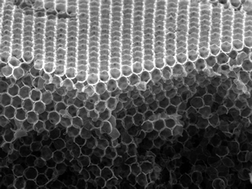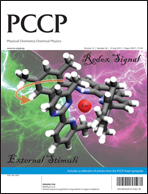Electron transport and recombination in three-dimensionally-ordered (3D-ordered) structure electrodes were investigated using intensity-modulated photocurrent and photovoltage spectroscopy. The surface-modified TiO2 inverse opal structure was applied as a 3D electrode. The morphology, crystalline structure and surface states of the 3D-ordered structure were characterized by SEM, TEM and XPS and compared to those of the conventional nanoparticulate TiO2 structure. The performance of the 3D electrode was also evaluated by comparing the transport time and recombination lifetime to those of the conventional electrodes. Remarkably, the recombination lifetime in inverse opal was found to be greater than in nanocrystalline TiO2 by 4.3–6.2 times, thus improving the electron collection efficiency by 10%. Comparing the photovoltaic performance, although the dye adsorption of the 3D-ordered porous electrode is lower, the electrode achieves a photocurrent density comparable to that of a nanoparticulate TiO2 electrode due to the higher light scattering as well as the higher collection efficiency.

You have access to this article
 Please wait while we load your content...
Something went wrong. Try again?
Please wait while we load your content...
Something went wrong. Try again?


 Please wait while we load your content...
Please wait while we load your content...